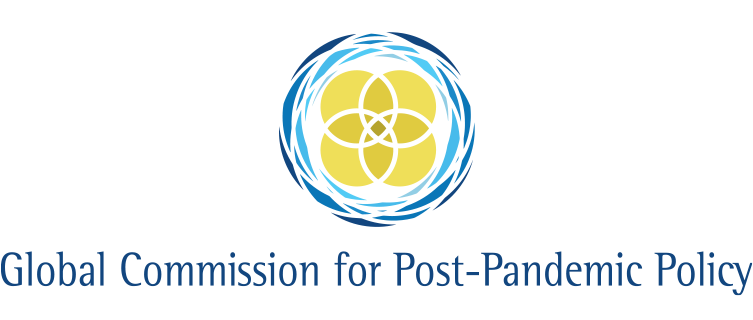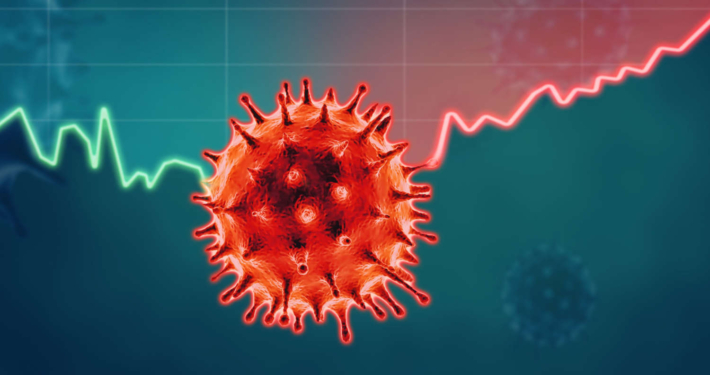COVAX: A Roadmap
Policy Monitor, April 9th 2021
By Dylan Barry, GCPPP staff
In the advanced economies, COVID-19 vaccination is picking up momentum. In the United States, by April 6th, 108.3 million people—32.4% of the American population—had received at least one shot of a COVID-19 vaccine. In the United Kingdom, 31.7 million people—or 46.7% of the British population—had also received at least one dose. In rich nations, UNAIDS estimates that at least one new person is vaccinated every second on average.
Among poorer or middle-income countries, barring micro-states and some oil-rich Gulf nations, only Chile has matched the best of the rich world’s vaccine programmes, with 7.1 million, or 37.2% of the population, having received at least one dose. Meanwhile, in the entirety of Africa, only 8.1 million people—0.60% of the continent’s population—have received any shots to date. In several countries, no shots have been administered whatsoever. As far as COVID-19 vaccinations are concerned, this is a multi-speed world.
This disparity results from wealth, the location of vaccine R&D and manufacturing, and shortages of supply. The rich countries are also where most—though not all—of the highest COVID mortality rates have been seen. But the disparity poses a number of problems: until vaccination becomes far more widespread, infections will still spread and new mutant strains will develop; economies cannot open to travel and tourism; the economic shocks from trade blockages and localised outbreaks will hit poorer countries harder and cause sovereign debt crises; and, last but not least, the disparity will strike many as illegitimate and even immoral.
For these and other reasons, on April 24th 2020, the COVAX initiative was established to try to address and ameliorate global disparities in the distribution of COVID-19 vaccines. This Policy Monitor aims to explore what COVAX can be expected to achieve and draw a roadmap for its progress.
What is COVAX?
The COVID-19 Vaccines Global Access initiative—or simply COVAX—is a global initiative committed to advancing fair and equitable access to COVID-19 vaccines worldwide, especially for low-to-middle-income nations. It was initially established at the prompting of the World Health Organisation (WHO), the European Commission, and France.
Alongside the WHO, COVAX is co-led by two other organisations. The first is the Global Alliance for Vaccines and Immunisation (GAVI), a public-private global health partnership that coordinates developing-world governments’ and donor-governments’ measures to finance developing-world vaccination. The second is the Coalition for Epidemic Preparedness Innovations (CEPI), a foundation started by the Wellcome Trust, the Bill & Melinda Gates Foundation, the World Economic Forum (WEF), and the governments of India and Norway. The CEPI funds the development of vaccines against emerging infectious diseases.
The COVAX Facility
The primary objective of COVAX is to secure enough COVID-19 vaccine doses to vaccinate at least 20% of every participating nation’s population, through the COVAX Facility, the initiative’s global procurementmechanism.
When this objective was set earlier in the pandemic, it was clear that two conditions needed to be met, in addition to the raising of funds. The first was that at least one—and preferably multiple—safe and effective COVID-19 vaccines had to be developed. In pursuit of this, the COVAX Facility established a portfolio of investments in 12 promising COVID-19 vaccine candidates, including the now widely-approved Oxford-AstraZeneca and Moderna COVID-19 vaccines.
Through these R&D partnerships, COVAX now has first right of refusal for more than one billion vaccine doses in 2021, subject to vaccine performance, regulatory approval and manufacturing capacity.
The second condition was that global COVID-19 vaccine manufacturing capacity needed to be dramatically expanded to meet global demand for COVID-19 vaccines. As a result, the COVAX Facility—through GAVI—made early efforts to both offer volume guarantees to specific manufacturers for vaccine candidates before being licensed and to provide longer-term market-wide demand guarantees. These efforts were made expressly to reduce the risks firms face in scaling-up their supply chains, with an eye towards incentivising proactive investment in manufacturing infrastructure and licensing. Unlike the United States government, however, COVAX did not provide funds directly to support manufacturing capacity.
COVAX has signed agreements with AstraZeneca, Pfizer, Johnson & Johnson, Novavax and Sanofi to secure 1.62 billion COVID-19 vaccine doses to be supplied in 2021. The COVAX Facility is also in active negotiations that—if successful—would raise that figure to 2.265 billion doses.
Additionally, the COVAX Facility is responsible for allocating and delivering its secured vaccine doses to the more than 190 COVAX participating nations. To do this, the COVAX facility is guided by an allocation framework developed by the WHO and designed to protect at-risk groups in all participating countries.
How is COVAX financed?
The COVAX Facility is financed in two ways: upfront payments and donations. Thanks to a big rise in donor pledges led by President Biden and the United States at the G7 rich-country summit on February 19th, by far the largest source of funds will be donations. But they are still not high enough to meet COVAX’s needs.
The upfront payments come when higher-income nations procure a proportion of their vaccine supply through COVAX. By paying into the COVAX Facility, such countries both secure orders for the doses they need to protect their priority populations, but also thereby finance the COVAX Facility’s R&D efforts and its efforts to incentivise manufacturing capacity. The higher-income nations that contribute in this way are referred to as COVAX Self-Financing Partners (SFPs). These include advanced economies like Canada and New Zealand, big emerging-market economies like India, Mexico, Brazil and South Africa and smaller ones such as Jamaica, Botswana and Costa Rica.
The donations to COVAX come through a separate financial mechanism. This is the COVAX Vaccines Advanced Market Commitment (AMC), a specially designed instrument. The COVAX AMC pools donor funding—primarily from donor states, but also from large corporations and civil society organisations—to finance vaccines allocated to 92 lower-to-middle income nations eligible for the support.
Contributions to the COVAX AMC come in the form of direct grant contributions or guarantees. In addition, four nations—the United Kingdom, Norway, Spain and Australia—are backing vaccine bonds issued by the International Finance Facility for Immunisation (IFFIm), a GAVI-run financing instrument. The United States, Germany and Canada have also made separate donations towards the costs of COVAX logistics and delivery.
In total, the COVAX AMC has now secured a total of US$8.8 billion in commitments from donors, covering 2020-25. Amongst nations, the largest commitments come from the United States, Germany and the United Kingdom, with the Bill & Melinda Gates Foundation leading donations from non-state actors.
COVAX fulfillment
The first round of COVAX allocations—published by the WHO in late February—outlined the delivery of 237 million doses of the Oxford-AstraZeneca vaccine to 142 COVAX Facility participants in Feb-May, 2021. The largest beneficiaries of this round will be India, Pakistan, Nigeria, Indonesia and Brazil respectively, although India’s allocation is still yet to be finalised.
In addition to this, an exceptional distribution of 1.2 million doses of the Pfizer-BioNTech vaccine was also announced. The largest beneficiaries of this distribution will be South Africa, South Korea, the Philippines, Colombia, Peru and Ukraine. The allocations of the Pfizer-BioNTech vaccine to countries in Latin America and Africa reflects concerns over the efficacy of the Oxford-AstraZeneca against SARS-CoV-2 strains dominant in those regions.
The delivery of both allocations has now begun, with essentially all the Pfizer-BioNTech vaccine doses already shipped. The distribution of the Oxford-AstraZeneca vaccines will take longer and require several delivery tranches to complete, however. Nevertheless, COVAX has now made initial deliveries to 62 of the 142 nations allocated vaccines in the first-round of allocations. The biggest beneficiaries so far are India and Nigeria.
The road ahead
According to its own forecasts, COVAX expects to make as many as 1.8 billion vaccine doses available to the 92 COVAX AMC economies in 2021—enough to cover 28% of those nations’ populations. That would be a tremendous accomplishment if realised.
However, delivery of COVAX vaccines faces challenges. Major vaccine producing regions—the United States, the European Union and, in recent weeks, India— have imposed export controls so as to prioritise vaccinations for their own citizens. The US expects to have completed vaccination of those of its adult population who want the jab by the end of May, so exports could accelerate after then. Producers in the EU are exporting vaccines, but with the Oxford-AstraZeneca vaccine having under-delivered against its EU contracts that firm is unlikely to be permitted to export in large quantities from the EU until the summer.
The biggest concern is, however, India. The Serum Institute of India (SII)—which manufactures the Oxford-AstraZeneca vaccine under license and has predicted 2021 volumes of one billion doses or more—is currently the COVAX Facility’s primary supplier of vaccine doses, with 28 million COVAX doses supplied to date. Through March and April, a further 40 and 50 million doses were expected, with 550 million owed for 2021-22 in total. That is a quarter of the COVAX Facility’s confirmed supply.
However, in the face of surging COVID-19 case numbers, the Indian government has begun reallocating vaccine production initially set aside for COVAX towards domestic use. In fact, of the 28 million doses nominally supplied to COVAX by the SSI, at least 10 million have never left India. These are still counted as “delivered doses” by COVAX because they have been struck off against India’s broader COVAX allocation—a face-saving measure. In addition, SII is also complaining about difficulties obtaining materials such as bags and filters for its vaccine output from abroad, chiefly the United States.
As a consequence, the COVAX Facility has had to announce delays to its March and April delivery schedules, threatening targets for the first half of the year. These delays are unlikely to be the last. If the world has to rely on widespread vaccination in India—with its adult population of 900 million—before being able to access COVAX supplies, the process could be slow. By April 7th, only 85 million doses had been administered in the country.
For COVAX’s future schedule, much depends on what happens in India, and on what quantity of doses can be exported from manufacturers in the US and Europe in the second half of 2021. Beyond that, the key determinants will be future funding, to raise COVAX’s targets above the now-expected 28% of recipients’ populations, and the building and maintenance of the vaccine production capacity to meet that goal.
GCPPP Newsletter
We now publish a weekly newsletter to inform friends and supporters of the Global Commission’s progress and to provide updates when new content is published. Please sign up here:








